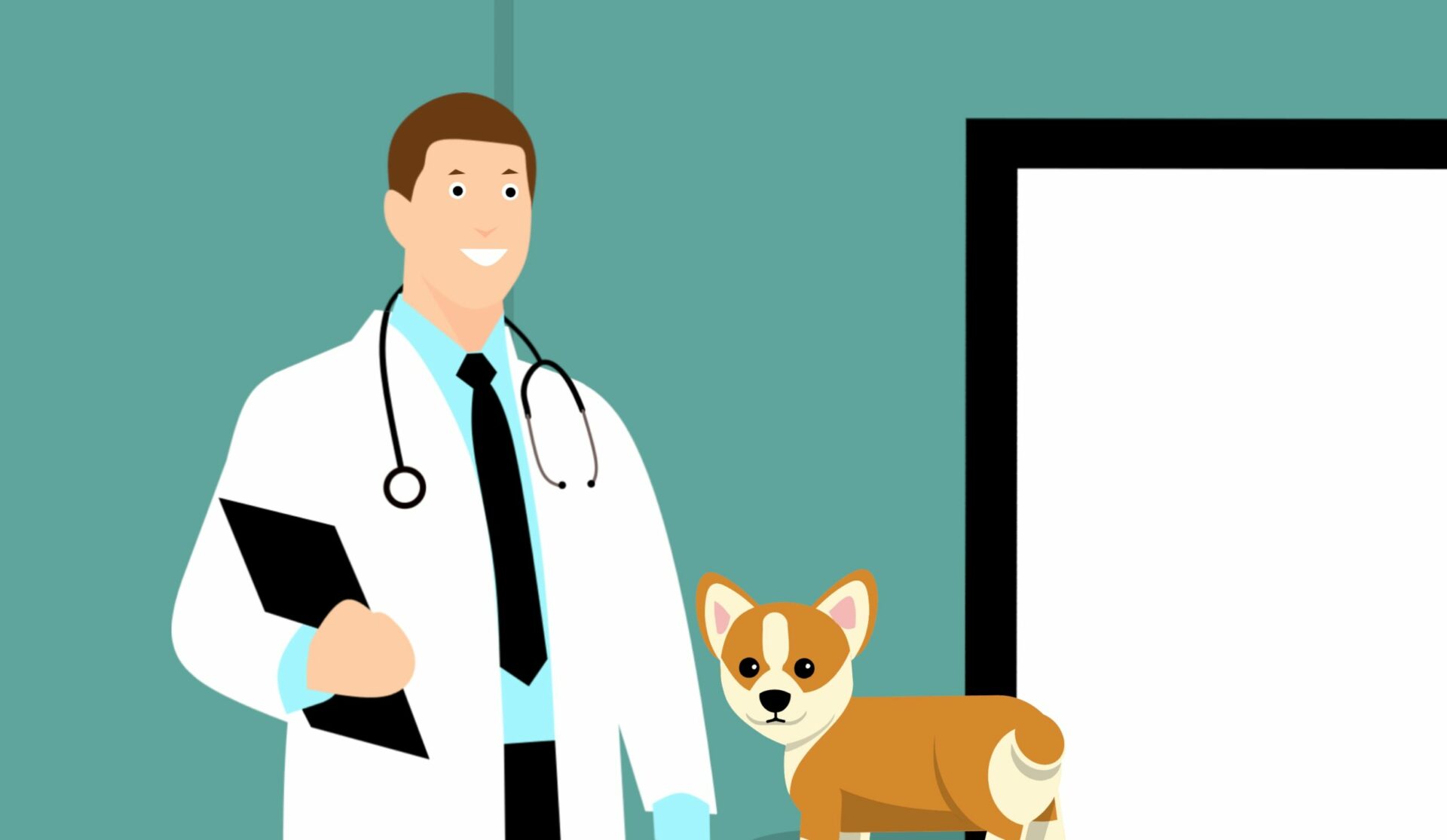What Do Veterinarians Wear

Veterinarians wear specialized clothing and equipment to protect themselves and their patients while they’re performing their duties. This protective clothing and equipment helps to ensure the safety of both the veterinarian and the animal in their care. It also allows them to easily identify medical tools and supplies needed for a particular procedure or treatment. In this article, we’ll take a closer look at what veterinarians typically wear and why it’s important for them to be properly equipped.Veterinarians typically wear a lab coat or other protective clothing such as scrubs, gloves, a mask, and safety glasses when treating animals. This helps to keep the veterinarians and their patients clean and safe during examinations and procedures.
What Protective Clothing Do Veterinarians Wear?
Veterinarians wear protective clothing to help prevent the spread of disease and protect themselves from potential hazards while working with animals. Protective clothing includes gloves, lab coats, face shields, shoe covers, and gowns. Gloves are essential for veterinarians to protect their hands from coming into contact with animal waste or other potentially harmful substances. Lab coats are also important to protect veterinarians from splashes of bodily fluids or other contaminants. Face shields provide an extra layer of protection against splashes and droplets that may contain bacteria or viruses. Shoe covers keep feet and shoes clean while in the exam room, preventing the spread of germs and bacteria. Gowns provide extra coverage for veterinarians when handling animals or performing treatments that may expose them to hazardous materials.
It is important for veterinarians to wear appropriate protective clothing when working with animals in order to avoid potential health risks. Wearing proper attire can help maintain a professional appearance as well as provide additional safety measures for both the veterinarian and animal alike.
What Shoes Do Veterinarians Wear?
Veterinarians are an important part of our society, responsible for the health and well-being of our beloved pets. They are often on their feet for long periods of time, so it is important that they wear comfortable and supportive shoes. Veterinarians typically wear either closed-toe shoes or clogs. Closed-toe shoes provide the most protection from possible contaminants that they may come into contact with during their workday. Clogs provide a good combination of comfort and protection from liquids and other debris.
It is important for veterinarians to wear shoes that support the arch and cushion the foot to reduce fatigue over long periods of standing or walking. Shoes should also be slip-resistant to ensure safety in wet or slippery conditions that may be encountered in a veterinary clinic or in an outdoor setting. Most veterinarians prefer leather or synthetic leather uppers for easy cleaning, as well as breathability and durability.
In addition to comfort and safety, veterinarians also need to consider style when choosing their footwear. Many veterinary clinics now require that all personnel wear matching uniforms or scrubs, so finding shoes that coordinate with the uniform is key. Clogs come in a variety of styles and colors, making them a great choice for matching with uniforms. Closed-toe shoes can also be found in colors to match scrubs as well as a variety of other professional attire options.
No matter what type of shoe veterinarians choose to wear, it is important that they select a pair that provides comfort, support, protection, and style so they can perform their job safely and effectively while looking professional at the same time.
The Benefits of Wearing Scrubs as a Veterinarian
When you become a veterinarian, you enter into a profession that requires a great deal of knowledge and skill. As such, it is important to dress in a way that reflects your professionalism and respect for the work you do. Wearing scrubs is one of the best ways to do this, as they provide both comfort and protection while maintaining an air of professionalism.
Scrubs are designed to provide comfort and movement. They are made from lightweight fabrics that are breathable and won’t restrict your movement. This allows you to stay comfortable while performing delicate procedures on animals. Additionally, scrubs are designed with pockets that make it easy to keep track of essential supplies like bandages, syringes, and ointments.
As veterinarians often work with animals who may be carrying contagious diseases or parasites, wearing scrubs is essential for protecting yourself from infection or contamination. Scrubs are easily cleaned and disinfected between patients so that any contamination can be quickly eliminated. They also provide an extra layer of protection if an animal unexpectedly scratches or bites during an examination or procedure.
Lastly, wearing scrubs is a great way to demonstrate your professionalism to clients and colleagues alike. The clean lines and solid colors of scrubs present an image of competence and trustworthiness that clients look for when selecting a veterinarian for their pet’s care. They also make it easy for colleagues to identify you as a veterinarian in the clinic setting without having to ask questions about your role.
In conclusion, wearing scrubs as a veterinarian offers numerous benefits including comfort, protection, and professional presentation. Whether you’re performing checkups or surgeries, scrubs will help keep you safe while ensuring you look the part of a professional veterinarian at all times.
Safety Gear Required for Veterinarians
Veterinarians require a variety of protective gear to ensure their safety while performing their duties. This includes items like gloves, masks, face shields, safety glasses, and other protective clothing. Gloves are an important piece of safety equipment for veterinarians as they help protect against the spread of potentially deadly viruses and bacteria. Masks are also essential to protect against airborne contaminants. Face shields and safety glasses provide additional protection from splashes and other forms of contamination. Protective clothing such as lab coats, coveralls, and gowns help keep veterinarians clean during procedures. In addition to these items, veterinary clinics may also require specialized equipment such as autoclaves for sterilization purposes.
It is important that any veterinarian working in a clinic is provided with the appropriate safety gear to prevent injury or infection from occurring while on the job. Veterinarians should be familiar with the safety protocols set by their place of employment and take appropriate steps to ensure their own protection. This includes wearing the proper clothing for any procedure they may be performing and being aware of any potential hazards in their environment. Additionally, they should always use personal protective equipment (PPE) when working with animals, such as goggles or gloves when handling needles or other sharp objects. By taking these precautions, veterinarians can help ensure their own safety while providing quality care for their patients.

The Importance of the Right Clothing for Veterinarians
Having the right clothing is an important part of any veterinarian’s job. Not only does it protect them from disease and parasites, but it can also help them stay comfortable while working with animals. The right clothing can also provide a professional appearance that can help to build trust with clients and their animals.
Veterinarians need to be aware of the different types of clothing that are available for their line of work. They should choose clothing that is comfortable, breathable, and flexible in order to move freely while working with animals. It is also important to choose clothing that is durable and easy to clean in order to protect against infection or contamination from animal waste.
Clothing should be chosen based on the type of work the veterinarian will be doing. For example, a veterinarian who will be performing surgery may need more protective clothing such as a lab coat, gloves, and safety glasses. Those who are dealing with large animals may need thicker materials such as leather or reinforced denim for protection against scratches or bites. Veterinarians who are dealing with small animals may need lighter materials such as cotton or polyester to reduce the risk of injury or discomfort during examination procedures.
Having the right clothing is important in order for veterinarians to feel comfortable and confident when caring for animals. It can also help create a professional image which can help build trust between veterinarians and their clients. It is essential for veterinarians to ensure they have the appropriate clothing for their line of work in order to perform their duties safely and effectively.
What Are the Best Fabrics for Veterinary Apparel?
When it comes to veterinary apparel, comfort and durability are essential. Veterinarians need clothing that is breathable and able to move with them during long days of work. The best fabrics for veterinary apparel are ones that are lightweight, strong, and durable. Cotton is a popular choice due to its breathability and natural fibers that make it comfortable to wear. Synthetic fabrics such as polyester and nylon are also great options because they provide excellent strength and durability while also being lightweight. Blends of natural fibers like cotton or linen with synthetic fabrics can also be beneficial for veterinary apparel as they provide a combination of comfort, breathability, strength, and durability. Additionally, moisture-wicking fabrics such as spandex can help keep veterinarians cool and dry during their shifts.
No matter which fabric you choose for your veterinary apparel, make sure it is comfortable and provides the necessary protection from both the environment and any potential hazards encountered while working in a vet clinic or hospital setting. Quality fabrics will last longer while providing optimal comfort throughout the day.
Should Veterinarians Wear Gloves When Treating Animals?
Veterinarians should always wear gloves when treating animals. While it may seem like a small thing, wearing gloves can help protect both the animals and the veterinarians from potential harm. Wearing gloves can help minimize the spread of germs, bacteria, and other potentially dangerous contaminants that could be passed from one animal to another or even to the veterinarian. It also helps to protect the veterinarian’s hands from coming into contact with any harmful substances that might be present on an animal’s skin or fur.
Gloves also provide a physical barrier between the veterinarian and the animal, which can help reduce any anxiety or fear that may be felt by either one. Wearing gloves also helps to provide a sense of professionalism and trust between both parties, as it shows that the veterinarian is taking steps to ensure that both their safety and comfort are being considered.
Finally, wearing gloves when treating animals is important for maintaining hygiene standards in veterinary practices. Gloves are often used to prevent cross-contamination between patients, and wearing them ensures that all surfaces and equipment are kept clean and free of any potential contaminants. This can help to reduce the risk of infection or illness for both animals and veterinarians alike.
Overall, wearing gloves when treating animals is an important part of veterinary practice for both safety and hygiene reasons. It can help protect everyone involved from potential infections or illnesses while providing a sense of trust and professionalism between both parties involved in the treatment process.

Conclusion
Veterinarians wear a variety of clothing, including scrubs, lab coats, and safety glasses. Their attire depends on the type of practice they are in and the tasks they are performing. However, regardless of the type of practice or task, there are certain items that all veterinarians should have in their wardrobe for protection and comfort. These items include specialized gloves, protective eyewear, and sturdy shoes. In addition to these items, veterinarians may choose to wear additional types of clothing for warmth or protection.
Overall, it is important for veterinarians to dress appropriately for their job to ensure patient safety as well as their own safety and comfort. It also helps to make sure that their attire is professional and appropriate for the environment they are working in. The right type of clothing can help make a veterinary visit more comfortable for both the veterinarian and the pet owner.
In conclusion, veterinarians must take into consideration not only the practicalities of what they wear but also its overall impact on their practice environment when selecting clothing. The right attire can help create a more pleasant atmosphere for both patients and owners alike while still keeping everyone safe from potential hazards.
